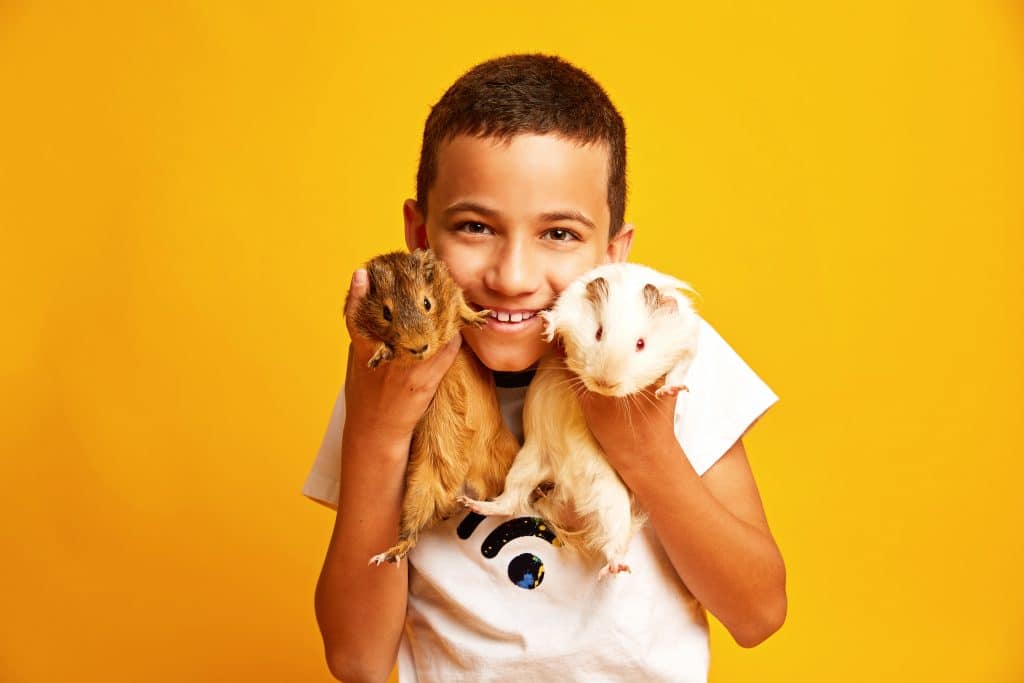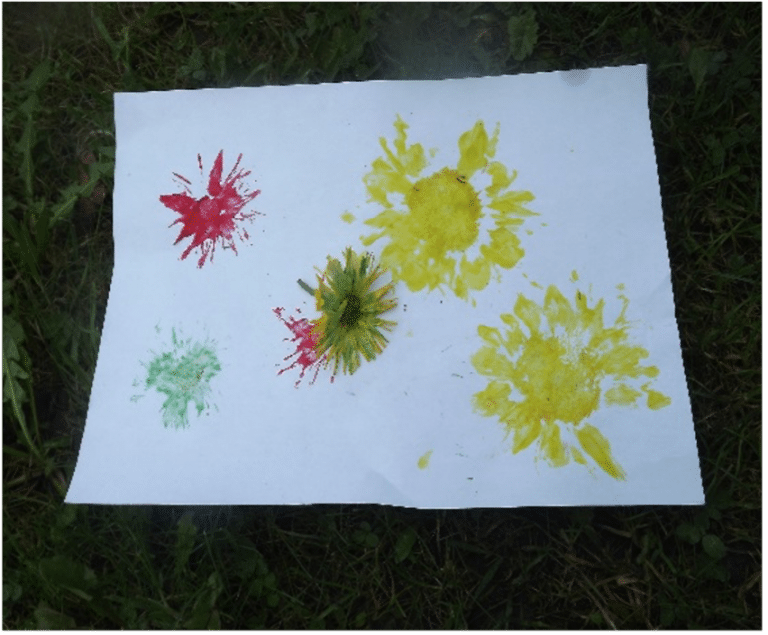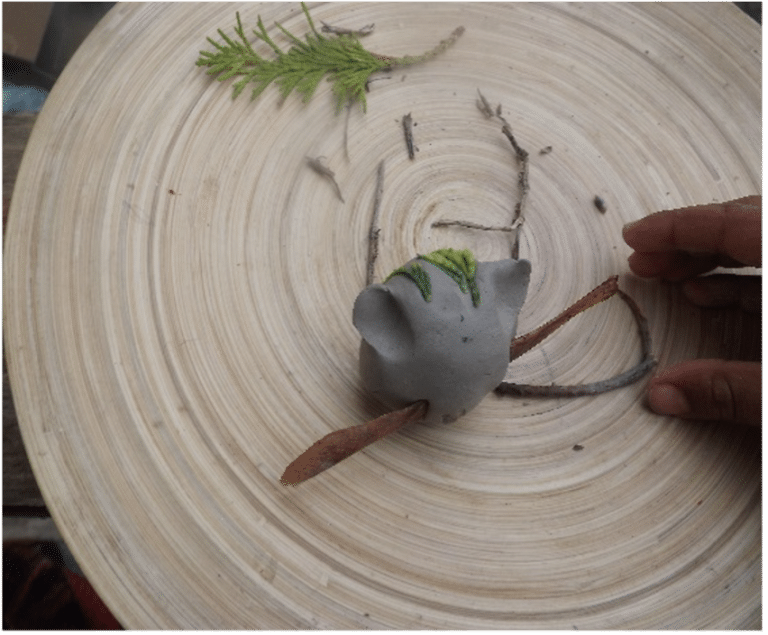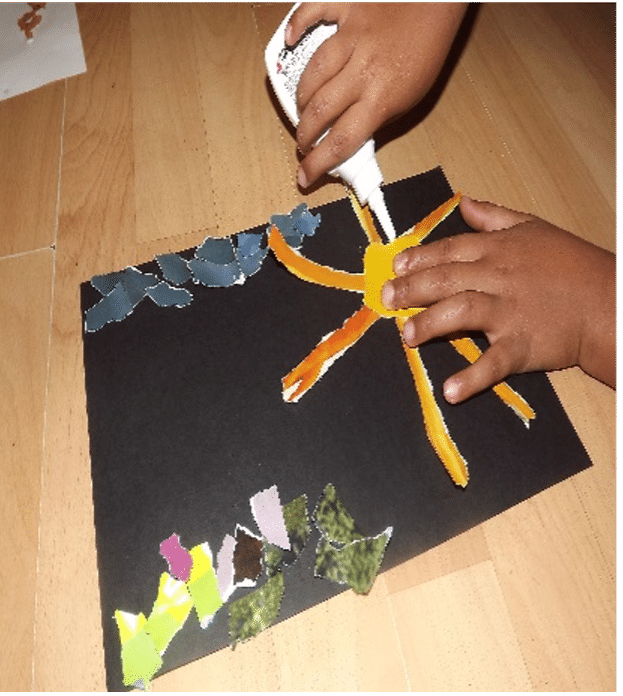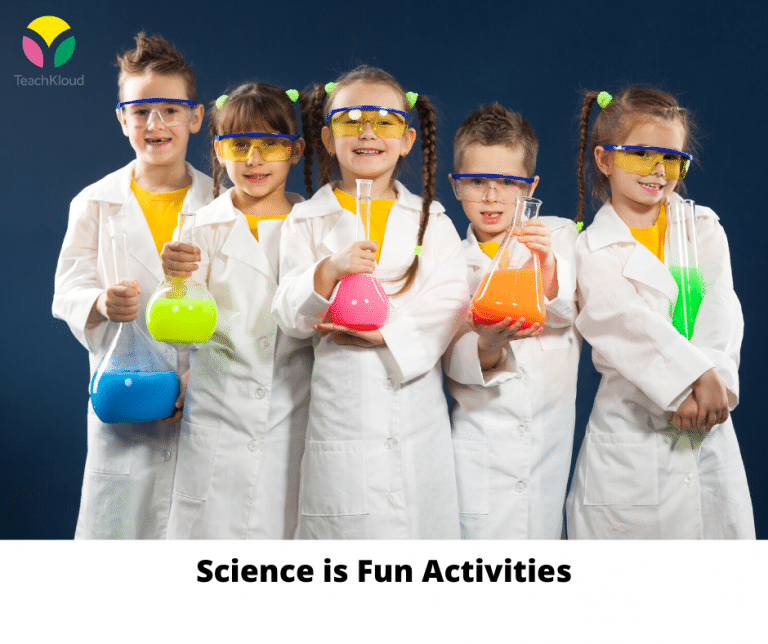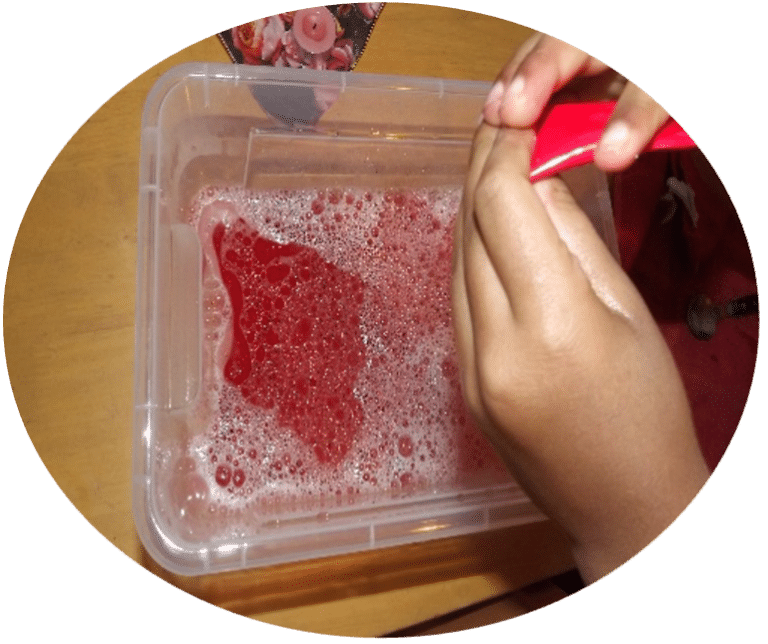There is so much to discover in my identity!
“When I discover who I am, I’ll be free.” – Ralph Ellison, Invisible Man
Materials
- Pastels
- Scissors to cut pictures and shapes (depending on age supervision may be needed)
- Crayons and pencils
- A2 paper and pictures / items that children have brought from home to describe things that they love
Learning Goals
- Fine motor skills: writing, pincer grasp and hand-eye co-ordination
- The Early learner will be able to creatively explore new ideas, thoughts and feelings
- Develop a sense of craftmanship
- Plan and make decisions about colour and form
- Interact with their peers and teachers through art
Process Description
Step 1
Show the children things that you, as the educator love or different things that people in general love (animals, friends, baking etc). The images used by the educator should reflect a variety of ethnicities, gender and things that children may like. This is a good way to facilitate identity and belonging in children. Use and describe images that reflect and respect children’s cultures and families. Examples could include pictures of parents, siblings, grand-parents, friends or special treats. It may also be a good idea to tell the children to bring in pictures of things they love a few days before.
Step 2
Discuss all the things that the children have brought in or identified as things that they love. Why do they love these things and what do they have in common with their friends? For example, do they like some of the same things or does something they do or like make them unique? Take time to discuss what the Early Learners (ELs) love and why these things are special to them.
Step 3
Explain that we all have something unique about us and things that we love/like. That is what makes us special and unique. Something you may like another person may not but that’s okay. After showing stimulus, encourage ELs to depict their own version of love and things that they like.
Step 4
Present the early learners with pastels, coloured paper, pencils, crayons and allow them to explore using and holding their tools and materials (if not already familiar of if they are young). Allow the early learners to draw/depict what they love or what they think love encapsulates.
Step 5
Gather drawings and display. Refer back to aim asking relevant questions. Remember it is about the process and not the product. Allow children to display their concept of love abstractly or whatever way they see fit.
- Who is that in your drawing?
- What colours did you use?
- Did you use any new colours?
Encourage the early learners to talk about their feelings and emotions related to love.
Adaptation
You could also do this learning opportunity as a whole class group. Bring in a large piece of paper and allow each child to decorate a section of the page with things that they love.
Reflective questions
- How can I involve or share this learning opportunity with parents. TeachKloud’s nursery app is used by thousands of educators and parents daily to share images, videos, comment on children’s work and collaborate!
- What could have been better?
- How did I scaffold children’s learning?
- Could I have adapted the learning opportunity to reflect all children’s needs, abilities and interests
- Did my teaching style reflect the principles and practices of the curriculum I follow?
Looking and responding
Use primary and secondary visual aids such as the pictures above and the children’s pictures or things they have brought in that they love.
Ask questions to generate discussion:
- Tell me about your picture…
- What do you see here?
- Why is this picture special to you?
- What is happening here?
- Who is this in the picture with you?
Explain that we all have something unique about us and things that we love/like. That is what makes us special and unique. Something you may like another person may not but that’s okay.
Bibliography
- National Council for Curriculum and Assessment (NCCA) (2009a) Aistear: The Early Childhood Curriculum Framework. Dublin: NCCA.
Author Bio

TeachKloud is a cloud-based management platform for early childhood educators and parents! Collaborate with parents, share images, video, learning journeys and consent forms. Document in minutes, so that you can focus on what matters most – the children in your care.
